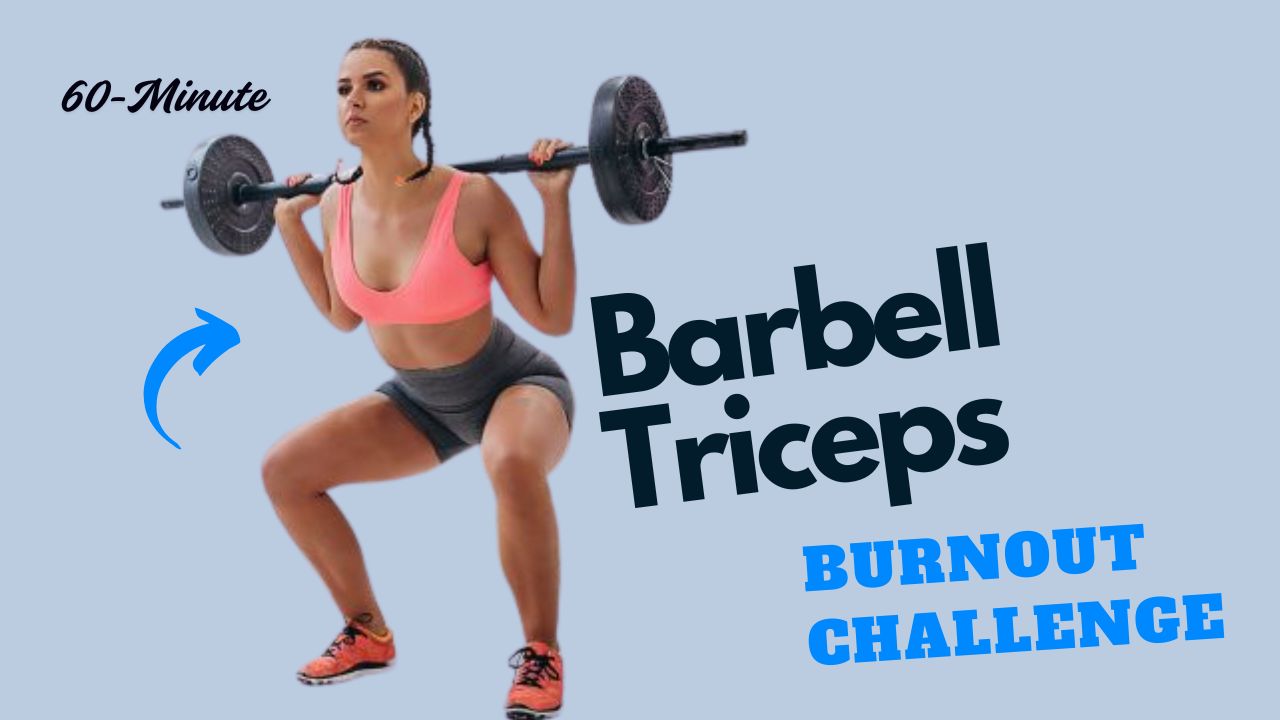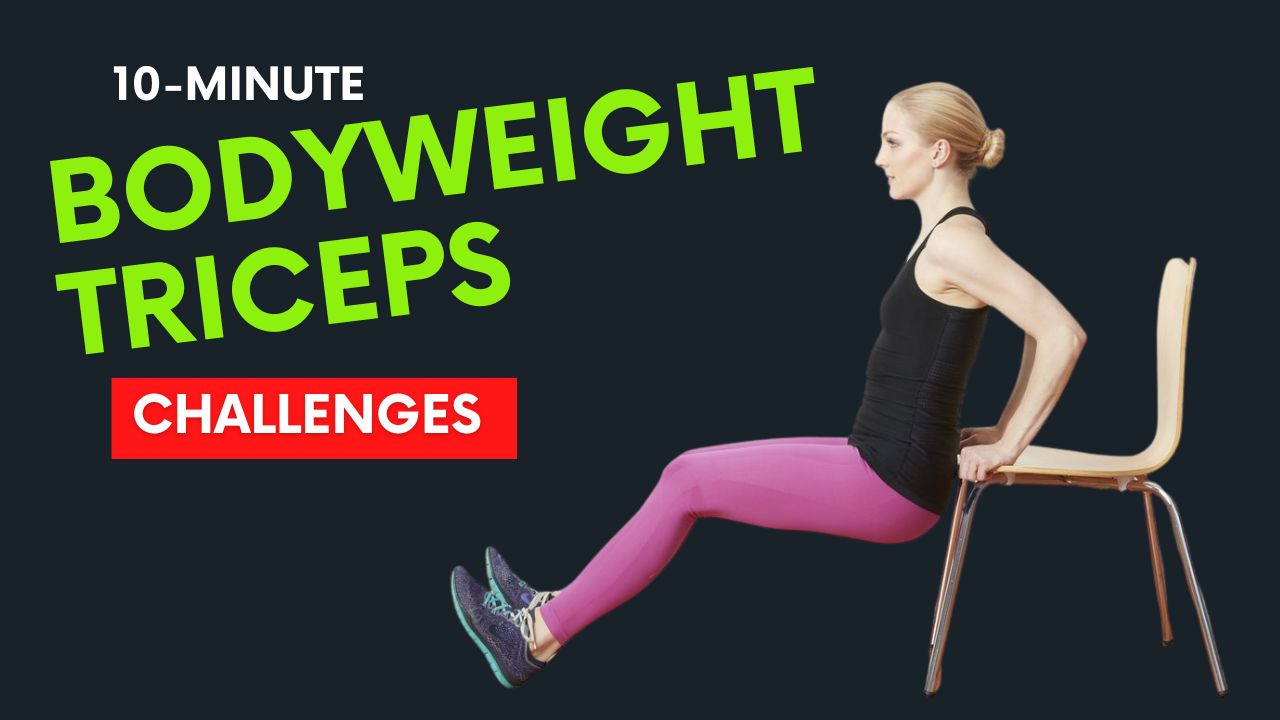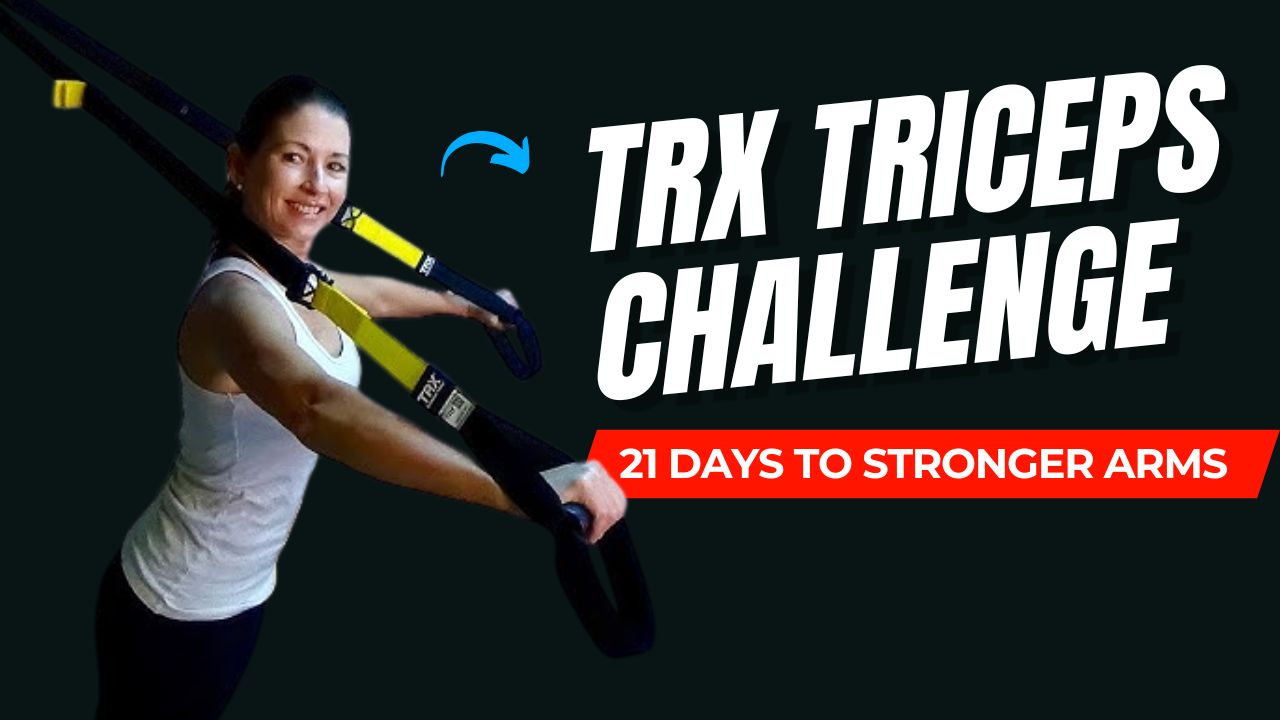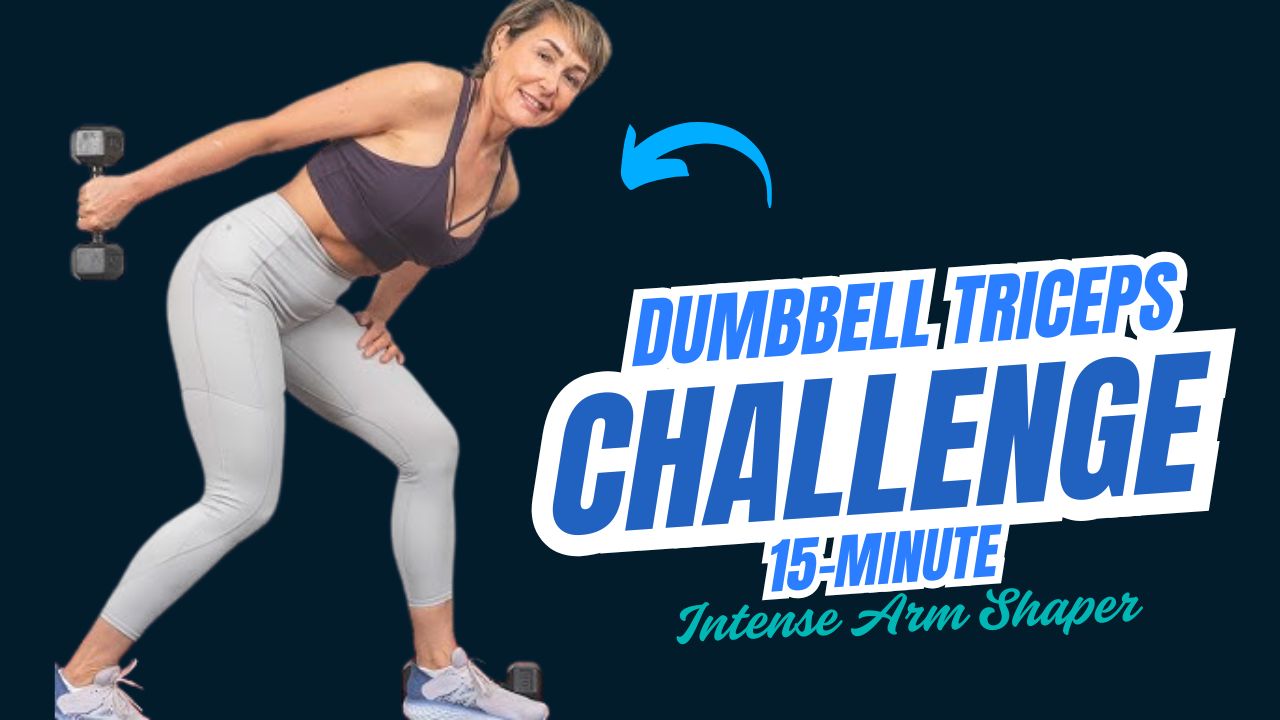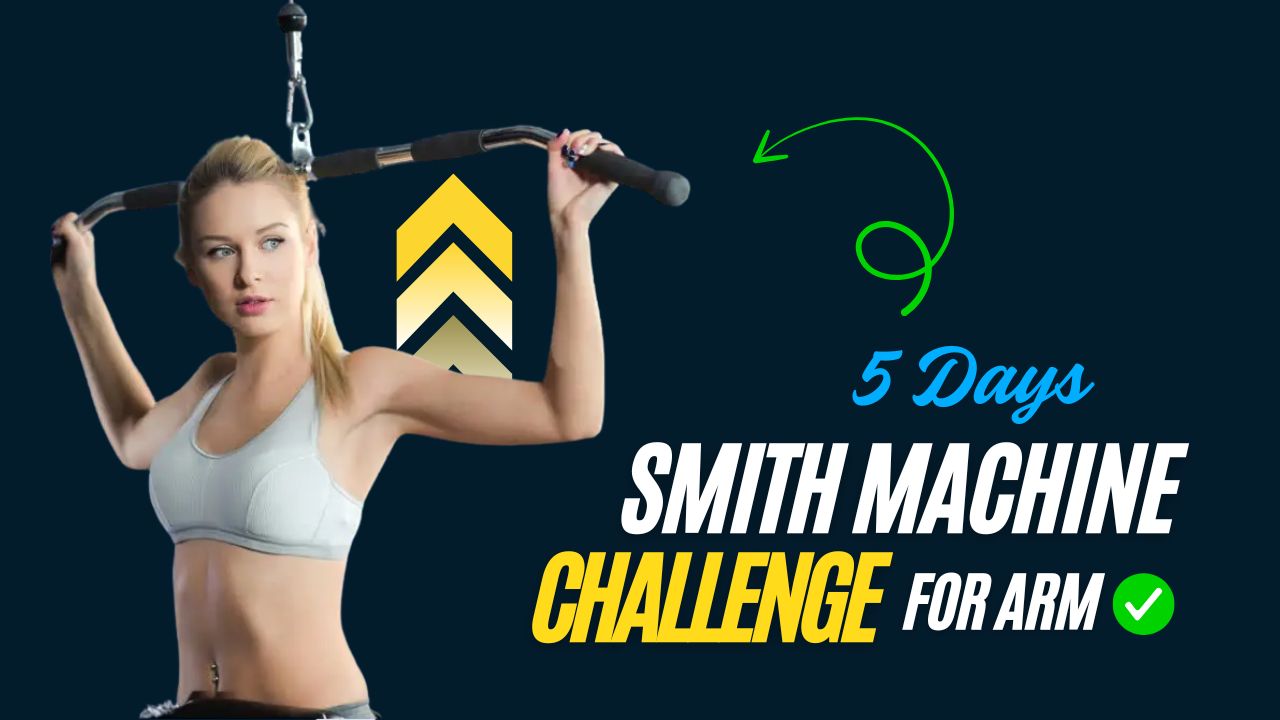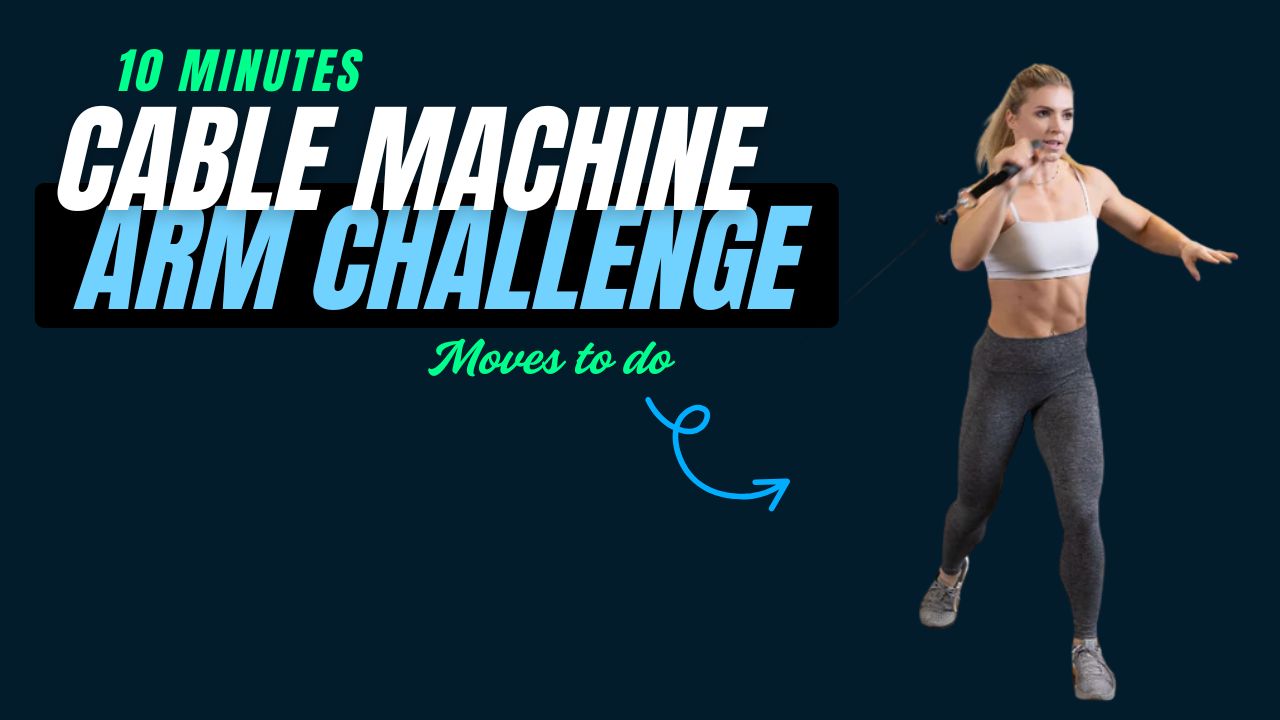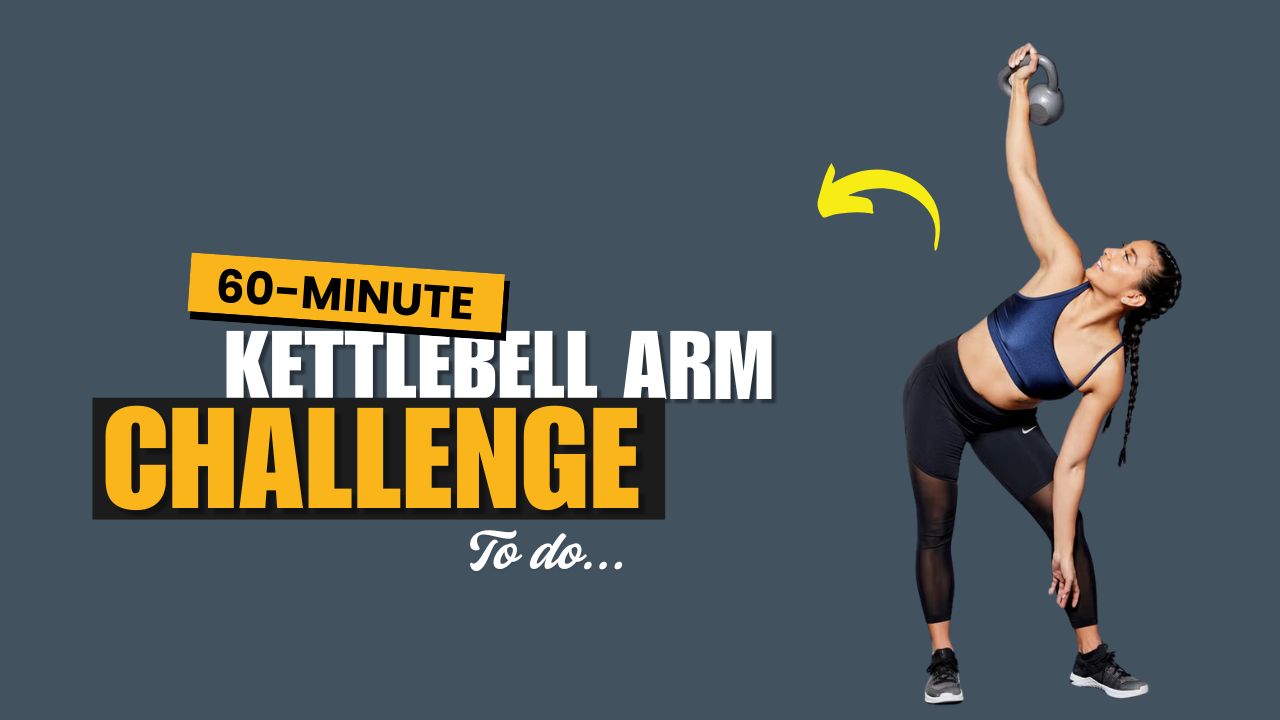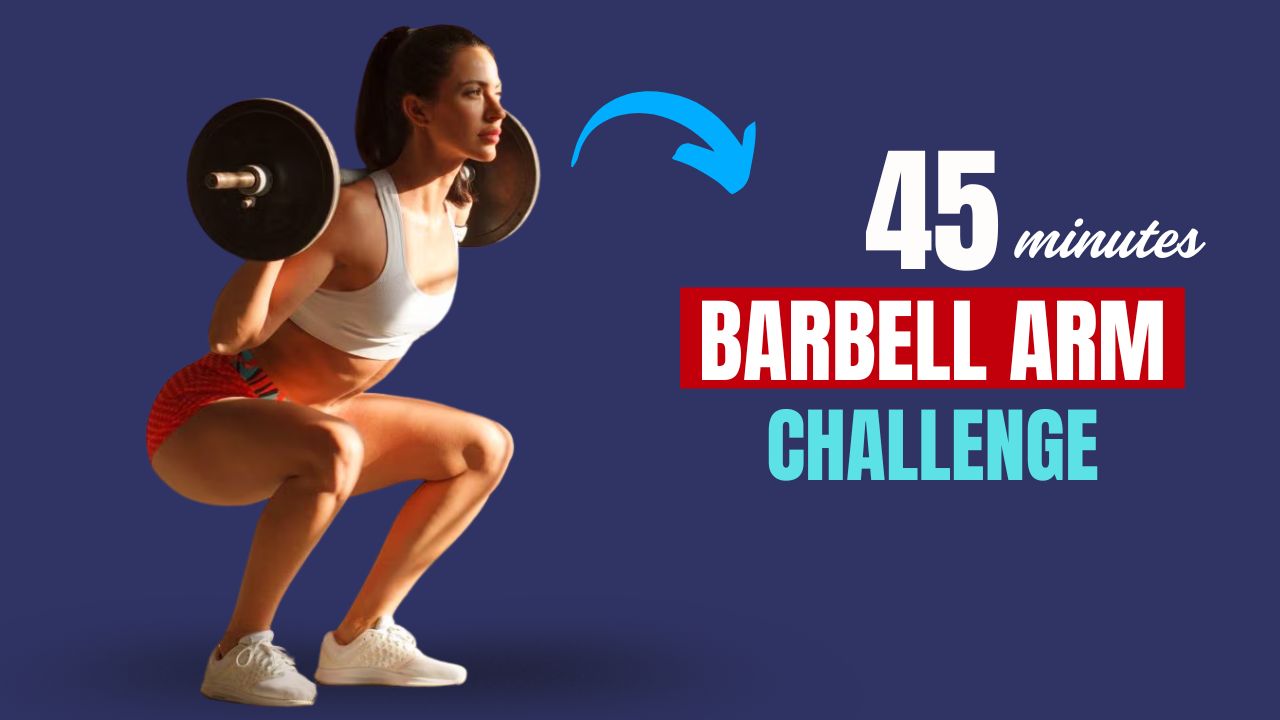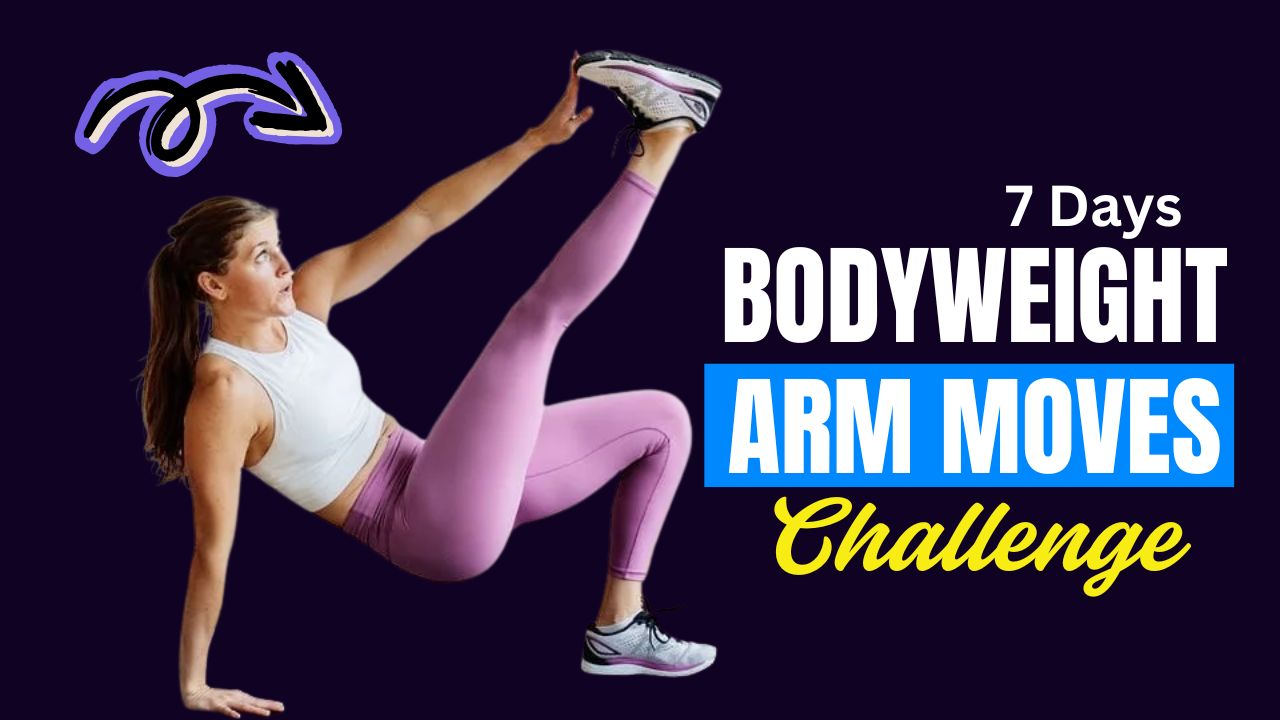Do you think squats and lunges are enough to grow strong, athletic legs? Think again. Most people overlook the calves—the powerhouses of lower leg stability, explosiveness, and aesthetics.
But what if you could sculpt those overlooked muscles with a machine already sitting in your gym?
Interesting Fact: Calves are among the most stubborn muscles in the body due to their dense muscle fiber makeup—meaning they need smart variation and constant challenge.
This is where the Hi-Lo Pulley Cable Machine becomes a game-changer. With precise resistance control and multi-angle options, this machine allows you to train your calves in unique, targeted ways you can’t achieve with traditional weights.
Let’s unlock the 7 best Hi-Lo Cable Calf Exercises you should start doing now to build stronger, more functional, and visibly sculpted calves.
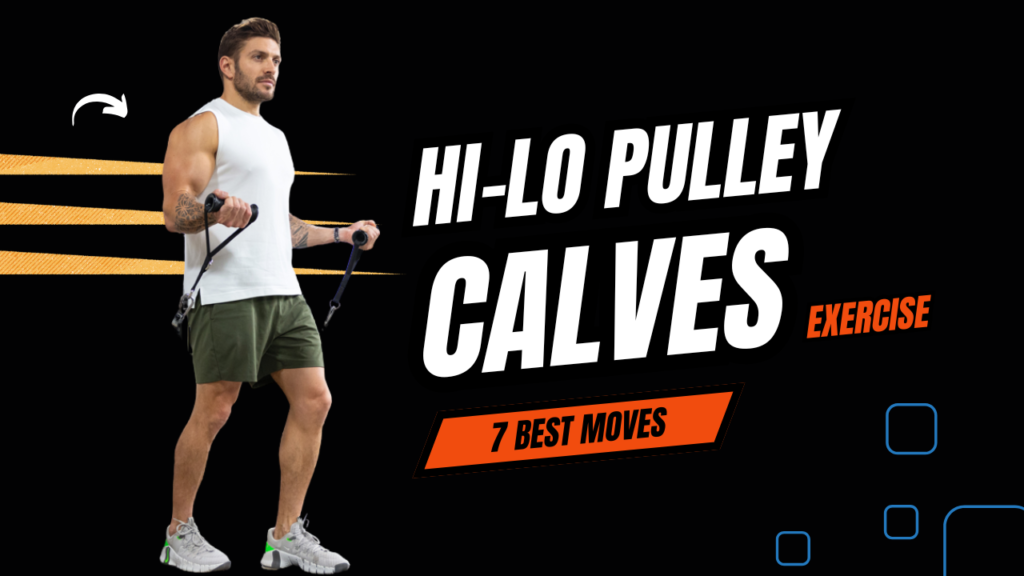
Table of Contents
What Can Happen After 30 Days of Hi-Lo Cable Calf Exercises
| Visible/Physical Changes | Functional/Performance Benefits | Health & Wellness Improvements |
|---|---|---|
| More defined and toned calves | Improved ankle stability and balance | Reduced risk of ankle and knee injuries |
| Slight increase in calf muscle size (hypertrophy) | Enhanced explosiveness in running, jumping, and climbing stairs | Better blood circulation in the lower limbs |
| Tighter, more sculpted look in the lower leg | Boosted calf endurance – walk or stand longer without fatigue | May ease leg cramping due to improved muscular strength |
| Reduction in muscle imbalances (left vs right leg) | Improved neuromuscular control and mind-muscle connection | Enhanced posture and gait during daily movement |
| Increased calf strength and power | More effective and stable squats, lunges, and deadlifts | Greater confidence wearing shorts or during sports |
Do’s and Don’ts of Hi-Lo Cable Calf Exercises
| Do’s | Don’ts |
|---|---|
| Focus on full range of motion – lift high, lower with control | Don’t perform short, half-reps just to finish quickly |
| Squeeze your calves at the top for max contraction | Don’t bounce or use momentum to lift the weight |
| Include both seated and standing variations | Don’t train only one angle or one type of calf raise |
| Start with light weight to perfect form | Don’t load too heavy and risk injury or poor activation |
| Maintain a controlled tempo – 2 sec up, 3 sec down | Don’t rush through the reps or drop the weight suddenly |
| Use proper footwear for grip and ankle stability | Don’t perform barefoot or in unstable shoes |
| Add progressive overload weekly – increase reps or resistance | Don’t stick to the same weight and reps for weeks |
| Train calves 2–3 times per week consistently | Don’t skip calf training thinking it’s not important |
| Warm up with ankle mobility drills or light cardio | Don’t jump straight into heavy sets without preparing the muscles |
| Listen to your body – stop if pain or discomfort arises | Don’t ignore sharp pain – calves are prone to strain if overtrained |
1. Standing Cable Calf Raise (High Pulley)
How to:
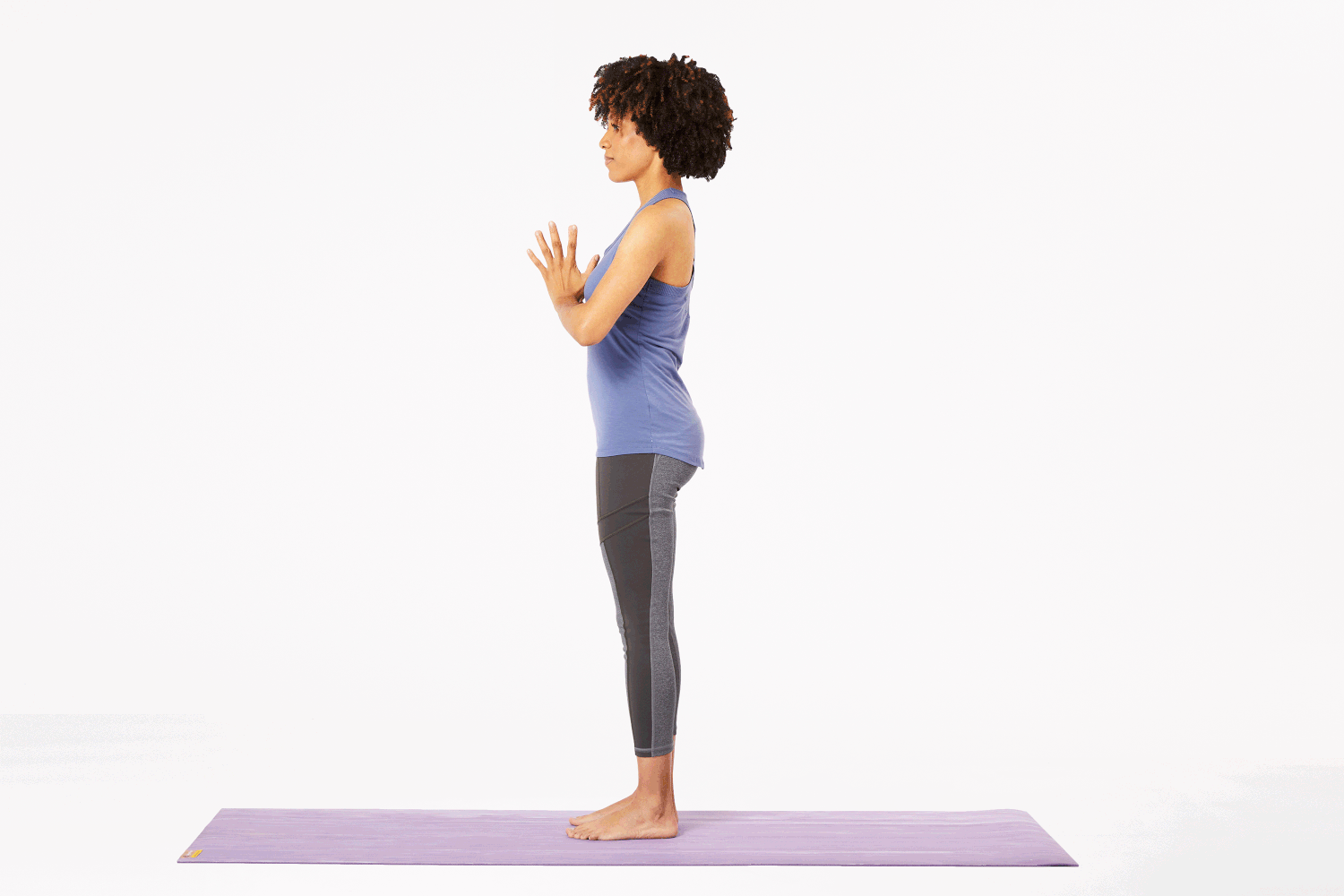
- Attach the cable handle to the high pulley.
- Stand upright facing the machine, grab the handle for balance (or use a rope on each shoulder).
- Rise onto the balls of your feet, squeezing your calves at the top.
- Slowly lower your heels without letting them touch the ground.
Benefits:
- Directly targets the gastrocnemius, the upper part of the calf.
- Helps improve vertical power for running and jumping.
- Keeps constant tension through the movement for better muscle engagement.
Myth Buster: Many believe only heavy weights grow calves. But consistent tension and controlled form (like with cables) can be even more effective.
2. Seated Cable Calf Raise (Low Pulley)
How to:
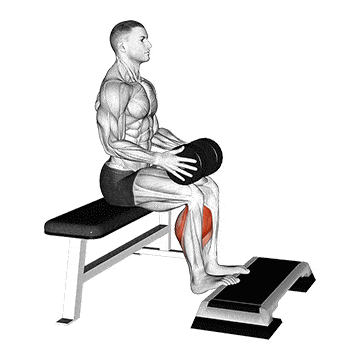
- Attach a straight bar or rope to the low pulley.
- Sit on a bench, knees bent at 90°, feet on a step or plate.
- Rest the bar across your thighs (or hold the rope), and push through your toes to raise your heels.
Benefits:
- Emphasizes the soleus muscle, critical for endurance.
- Supports posture and ankle mobility.
- Great for people who find standing raises difficult or fatiguing.
3. Single-Leg Cable Calf Raise (Low Pulley)
How to:
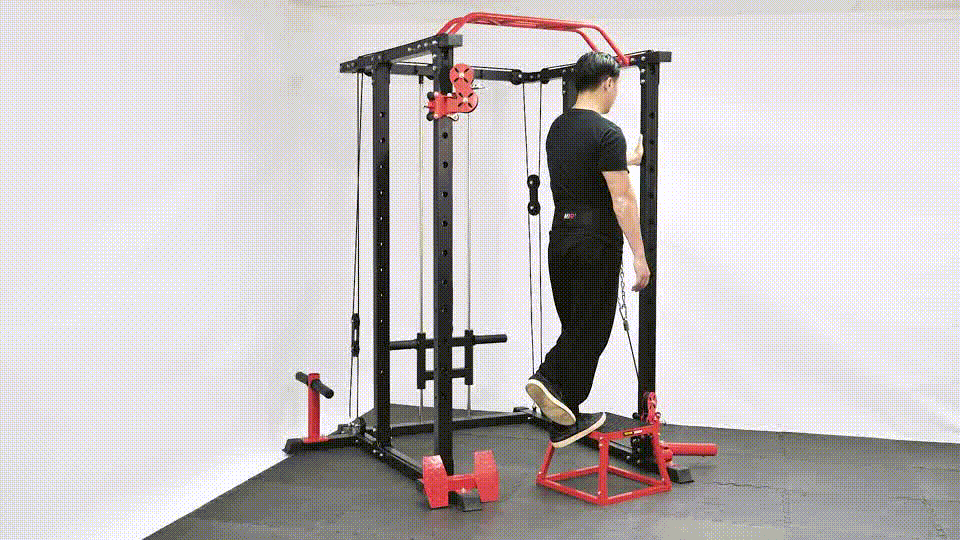
- Hook a D-handle to the low pulley.
- Stand sideways to the machine, holding the handle with one hand.
- Stand on one leg and slowly raise your heel while balancing.
Benefits:
- Corrects muscle imbalances between the left and right calves.
- Improves balance, coordination, and joint control.
- Adds a core challenge due to the unilateral load.
Tip: Start with your weaker leg first, and match reps on the dominant side.
4. Cable Donkey Calf Raise
How to:

- Use a low pulley with a rope attachment.
- Lean forward at the hips (like in a donkey calf raise), hands resting on a bench or box.
- Hold the cable between your legs and press through your toes to raise your heels.
Benefits:
- Maximizes stretch and contraction in the entire calf complex.
- Adds a unique body angle that intensifies tension.
- Trains the calves in a loaded stretch, which stimulates growth.
5. Cable Calf Press (Using Bench or Leg Curl Pad)
How to:

- Sit on a bench or place your feet against a pad, similar to a leg press setup.
- Attach a low pulley with a straight bar.
- Push through your toes as if pressing weight away.
Benefits:
- Offers a safe seated press alternative.
- Highly effective for isolation training.
- Reduces spinal load compared to standing calf exercises.
6. Cable Step-Up Calf Raise
How to:
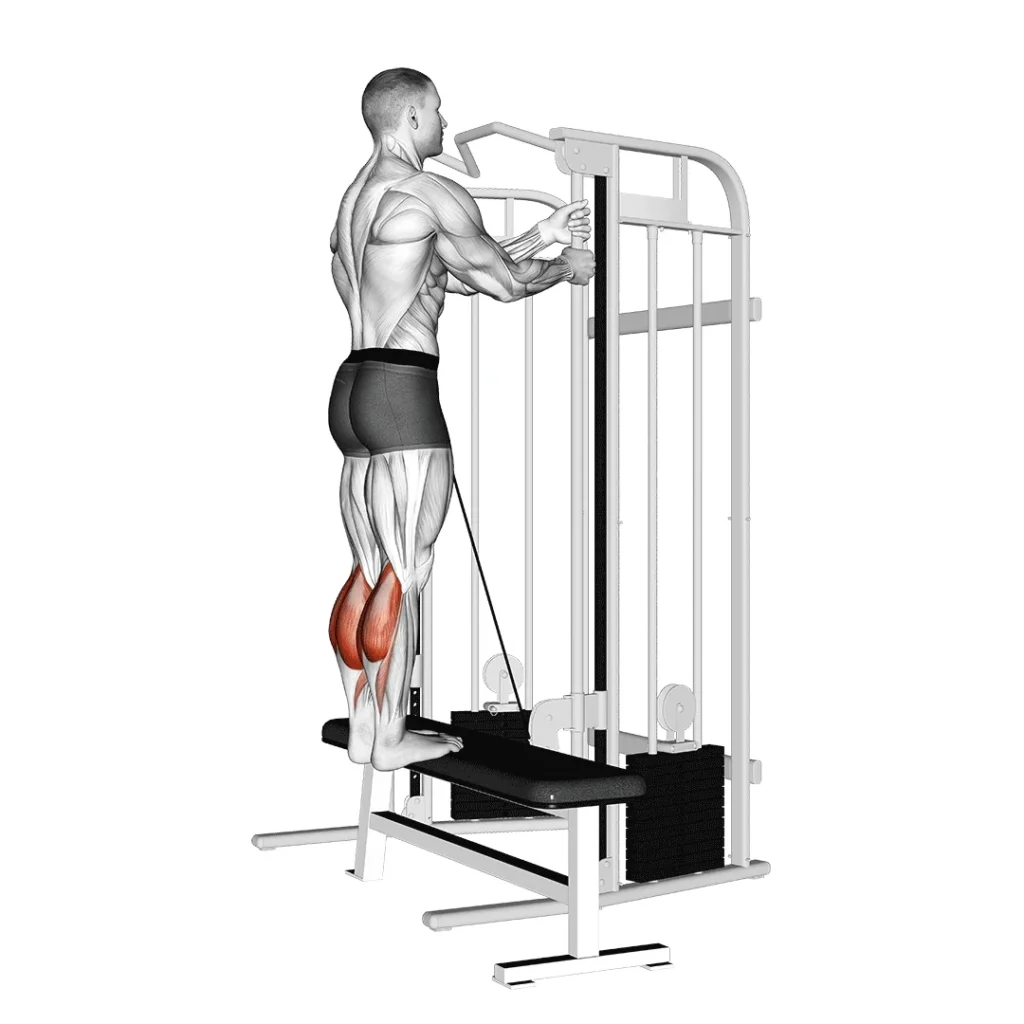
- Use a low pulley and hold a rope or handle in each hand.
- Step onto a platform or bench.
- Once on top, raise onto your toes and squeeze the calves before stepping down.
Benefits:
- Adds a functional, real-world movement (mimics stair climbing).
- Engages stabilizers and calves simultaneously.
- Builds strength and control in different ranges of motion.
7. Cable Toe Walks (Loaded Walking Raises)
How to:
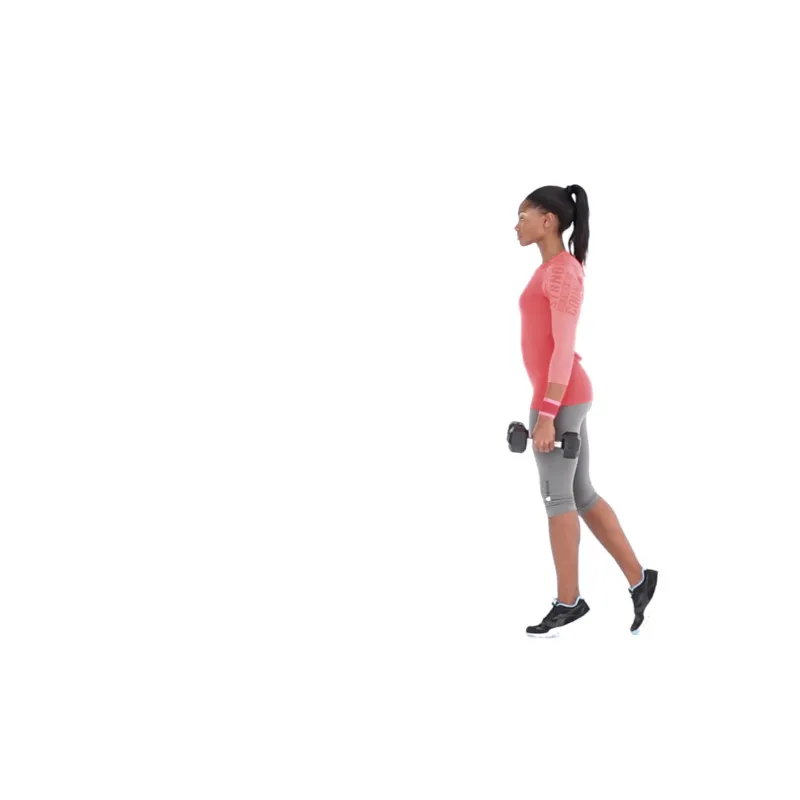
- Attach ankle straps to the low pulley or hold handles by your side.
- Walk forward 10-15 steps on your tiptoes, keeping the calves flexed.
- Walk back slowly.
Benefits:
- Enhances muscular endurance and posture.
- The perfect finisher for calf day or leg workouts.
- Encourages neuromuscular control and foot stability.
Did You Know? Strong calves contribute to injury prevention in knees and ankles—especially for runners, dancers, and athletes.
Final Thoughts: Why You Need These Cable Calf Exercises in Your Routine
Most gym-goers treat calves as an afterthought. But strong calves are essential not just for looks—they’re foundational to your balance, speed, and lower body resilience.
The Hi-Lo Pulley Cable Machine offers unmatched control and versatility, allowing you to:
- Train from multiple angles
- Keep constant tension
- Target both soleus and gastrocnemius effectively
- Avoid the plateau that comes with machine-only or free-weight routines
Incorporate these 7 powerful pulley exercises at least 2–3 times a week and watch your lower leg strength, definition, and functionality hit a new level.
Frequently Asked Questions (FAQs)
Can I grow my calves using only a Hi-Lo Pulley Cable machine?
Yes, absolutely. The Hi-Lo cable machine offers constant tension, customizable resistance, and various movement angles that effectively target both the gastrocnemius and soleus muscles. When combined with progressive overload and proper recovery, it can stimulate hypertrophy and strength just like free weights or machines.
How often should I train calves for the best results?
2–3 times per week is ideal for most people. Calves recover faster than other muscles, but they still need rest. Training them with intensity and proper volume on alternate days ensures optimal growth without overtraining.
How long does it take to see noticeable results in calf size?
On average, with consistent training (2–3x/week), proper form, and progressive overload, visible results can begin within 4–8 weeks. Genetics do play a role in calf shape, but most people can achieve significant strength and definition improvements with cable-based training.
Can beginners do cable calf exercises?
Absolutely. Cables are safer and more controlled than many free-weight options. Start light and focus on form.
Are cables better than machines or dumbbells for calves?
They offer different benefits. Cables maintain tension throughout the movement and allow more angle variety, which helps stimulate calves more fully.
